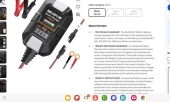This is a badge bit (BB) that is part of the
PEP curriculum. Completing this BB is part of getting the straw badge in
Electricity and
Plumbing
In this Badge Bit, you will install a deep well pump for potable pressurized water. Hand pumping water is great exercise. But maybe it's time to install a well pump:
Here's a video of a guy wiring a pump and getting it underground:
And one of the wiring bits by the pressure tank:
To complete this BB, the minimum requirements are:
- perform the installation or replacement of a deep well pump
- potable water
- pressure controlled with a pressure tank
- you can elect to do the electrical portion, plumbing portion or the full job
Electrical points earned vary from 4-8 points
- 4 points if you are replacing a pump
- 6 points if you are installing a full system (pump, pressure tank, breaker, wiring, trenching, etc)
- 8 points for something excessively wonderful or complicated (this is very unlikely to be awarded)
- no duplicate points for other sand or straw electricity badges like running the wire, adding the breaker, etc
Plumbing points earned vary from 4-8 points
- 4 points for replacing a pump
- 8 points for installing a pump where one didn't exist before
- you can get certified for the
"Replace a pressure tank" BB if you install a new one or replace the existing pressure tank
To show you've completed this Badge Bit, provide proof of the following as pics or video (less than two minutes):
- well location before you start work
- empty well casing
- old pump (if applicable)
- new pump wired and plumbed
- wires coming out of cap after installation
- planned pressure tank location (if applicable)
- pressure tank wired (if applicable)
- water flowing from a faucet or hose







